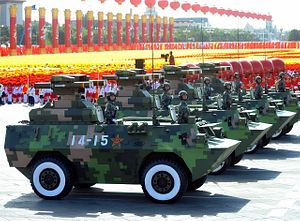Last week, Evan Braden Montgomery, a researcher at the Center for Strategic and Budgetary Assessment, a breeding ground of Andy Marshall acolytes (see: “Is the Pentagon’s Andrew Marshall the Leo Strauss of Military Analysis”), testified in front of the U.S.-China Economic and Security Review Commission on what they dubbed “managing China’s missile threat.”
Montgomery provided an insightful answer to the question of why China is pouring resources into the development of on ground-launched offensive missile forces to support its alleged “counter-intervention” – anti-access/area-denial (A2/AD) – strategy in Asia, which somewhat corresponds with my thoughts on the subject (see: “What Can the Middle Ages Teach us About US Naval Strategy”). In detail, he argues that ground launched offensive missiles are:
- A cost-effective way to generate combat power in the early stages of a campaign. Ballistic and cruise missiles are far less expensive to procure than aircraft or ships, much cheaper than most existing air and missile defenses, and orders of magnitude cheaper than many prospective targets.
- Difficult to locate, interdict, or otherwise disrupt before and immediately after being launched. Well-trained operators can deploy mobile platforms to hide sites that are hard to detect, maneuver them to pre-surveyed positions when they are ready to fire their payloads, tear down their equipment within minutes of executing an attack, and relocate them before being discovered. They can also transmit and receive information over hardened, dedicated, and closed systems like buried fiber optic networks, which are more difficult to jam than radio frequency transmissions and less vulnerable to attack than air- or space based communications systems.
- Difficult to intercept once in flight. Ballistic missiles have high terminal velocities and can be designed to maneuver or equipped with penetration aids. Alternatively, cruise missiles are often relatively slow, but stealthy, and can be programmed to follow complex flight paths that stress air defense systems.
Most interestingly, in his testimony Montgomery called for a modification of the Intermediate-Range Nuclear Forces (INF) Treaty by preserving the ban on missile deployments in Europe, while lifting the ban on missile deployments in Asia. This “Asia option” he notes would yield two benefits:
- It would enable the United States to develop and deploy ground-launched missile forces in the Western Pacific. As described above, this could enhance deterrence and improve crisis stability as China’s military becomes more powerful.
- It would drive a wedge between China and Russia. In this scenario, there would be little doubt that Moscow’s pursuit of new missiles was directed squarely at Beijing.
However, “[p]ursuing this option would certainly raise concerns about the reaction of U.S. allies in Asia, the possibility that Beijing might accelerate its own missile deployments in response, and Washington’s ability to monitor and verify the new arrangement,” Montgomery cautioned.
Of course, it would not be a true CSBA testimony without a reiteration of the usual “Gathering Storm Syndrome”– yet at the same time sober – analysis of China’s growing military capabilities (see: “What Can Isaiah Berlin Teach Us About Defense Analysis”):
Since the end of the Cold War, the United States has grown accustomed to facing opponents that are too weak to seriously threaten its overseas bases, air and naval forces, and battle networks, all of which underpin its ability to conduct and sustain large-scale military operations abroad. Today, however, Beijing is fielding capabilities that can hold at risk fixed forward bases, menace high signature air and naval platforms, and disrupt the United States’ ability to collect, store, and transmit information. In particular, the PLA has amassed a large arsenal of ground-launched ballistic and cruise missiles for land-attack, sea-denial, and anti-satellite operations.
The testimony is worthwhile reading in its entirety, particularly if one wants to get a clearer understanding of how U.S. defense analysts are framing the debate on the Sino-US military competition in the nation’s capital, and what actions they suggest to remedy China’s growing military strength.

































